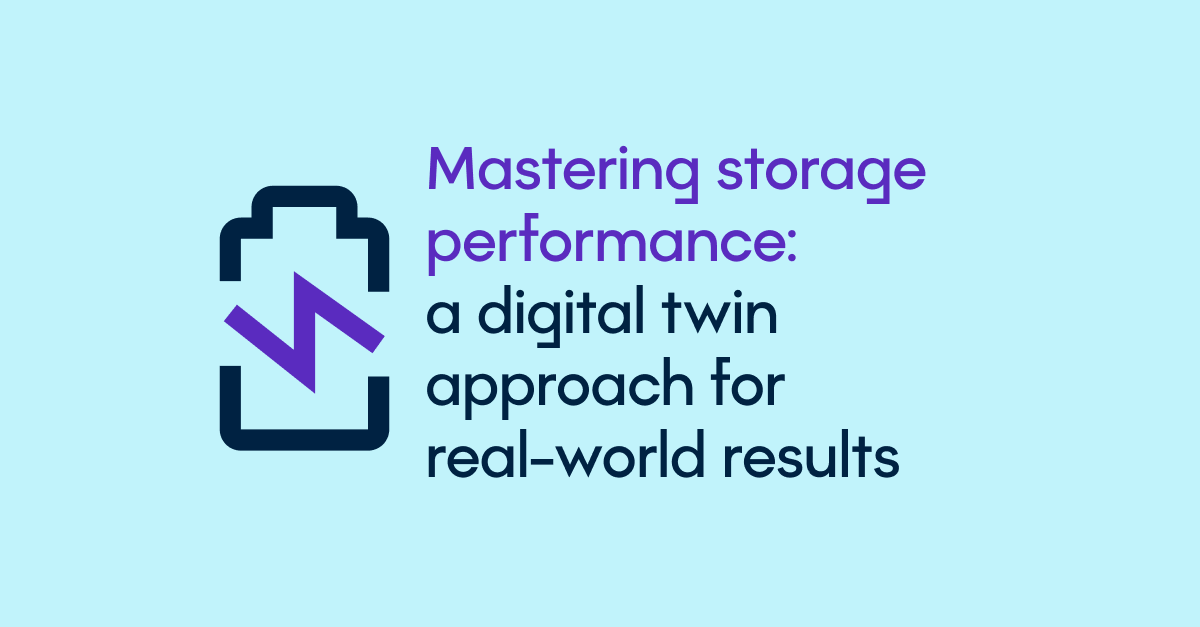Brussels, Belgium - July 28, 2025 - 3E, in collaboration with leading academic and industry partners, has successfully completed a major milestone in FULLEST (Flexible Utility-Scale Energy Storage) research project, delivering a digital twin technology for battery energy storage systems (BESS) together with Vrije Universiteit Brussel (VUB). The innovative solution, now integrated into 3E's SynaptiQ platform, represents a significant advancement in asset performance management for utility-scale energy storage applications.
The FULLEST project addresses critical challenges in the expanding European energy storage market, where Belgium has emerged as one of the most active markets. With over 1.1 GW of battery storage capacity contracted through Belgium's Capacity Remuneration Mechanism auctions and major installations from companies like ENGIE and TotalEnergies, the need for reliable battery performance optimisation systems has become essential for grid stability.
Technical accuracy through physics-based modelling
The FULLEST digital twin project demonstrates superior accuracy compared to traditional battery management approaches through its physics-based foundation. The system achieves less deviation from physical systems in State of Health (SoH) tracking, with validation results showing low SoH discrepancy detection compared to conventional Battery Management Systems.
The accuracy stems from several key technical elements:
Advanced electrochemical modelling
The digital twin uses PyBAMM (Python Battery Mathematical Modelling) to implement Single Particle Model (SPM) with solid electrolyte interphase (SEI) layer growth simulation. This approach captures the fundamental physics of battery degradation, particularly the development of SEI layers that consume lithium ions and increase resistance.
Real-time state estimation
The system processes voltage, current, and temperature data from power converter system (PCS) level measurements, normalizing them to cell level for accurate modelling. The physics-based approach allows for continuous synchronization between digital and physical twins.
Computational efficiency
To enable real-time operation, the team developed models that deliver 10x speed improvements over full-order models while maintaining accuracy. The SPM model implemented can simulate one day of operation of a PCS in 0.5 seconds, retaining the most characteristics equation of a battery including diffusion, charge transfer and side reactions that represent aging.
Validation results
The aging model was fitted by VUB to the results obtained from an extensive aging campaign, which was applied to cells removed from a Porsche Taycan sourced by second life activities from Revolta. The tests involved different aging conditions including fixed C-rates and dynamic loads, representing grid services such as voltage and frequency control. The fitted model provides an accurate track of aging, with an error below 1% of the cell rated capacity, considering one year of testing. A BESS that utilises second life Taycan cells is currently being monitored in SynaptiQ. The implementation of the digital twin offers a validated method for calculating the system's SOH, in contrast to the BMS-provided values, which remained fixed at 100% and therefore lacked meaningful insight.
Collaborative research: industry and academia advancing BESS asset management
The FULLEST project brought together complementary expertise from five partners, each contributing specialised knowledge essential to the project's technical success:
3E's integration leadership: 3E led the commercial implementation, adapting the digital twin for integration within the SynaptiQ platform. The company developed the data architecture and preprocessing modules to handle the challenges of real-world BESS data, including missing measurements and sensor errors. 3E's work ensured the digital twin operates effectively across diverse BESS configurations, from individual containerised units to large-scale installations.
VUB's scientific foundation: Vrije Universiteit Brussel provided fundamental battery physics research, developing the electrochemical models that form the digital twin's core. VUB's implementation of SEI degradation modelling in PyBAMM enables accurate prediction of capacity fade and optimization of operating strategies to extend asset life. Their work on parameter estimation and model validation established the scientific rigor underlying the system's accuracy.
Sirris' AI and machine learning contributions: Sirris developed machine learning algorithms for anomaly detection and reduced-order modelling. Their work on unsupervised clustering methods enables early fault identification through temperature pattern analysis. Sirris also contributed to the development of ROM approaches using linear regression and neural networks to accelerate computational performance.
Revolta's real-world validation: Revolta provided access to operational BESS data from one of their customers, enabling validation of the digital twin under diverse operating conditions. Their contribution of six months of operational data from a system with 12s6p cell configuration will allow the team to test the model's performance against actual degradation patterns.
Eneco's market integration: Eneco contributed energy market insights, helping align the digital twin's capabilities with grid service requirements and revenue optimization strategies. Their input guided the development toward practical applications in frequency containment reserve and other grid services.
Three strategic use cases driving commercial value of Battery Energy Storage Systems
The project addresses three critical operational areas that have become standard in the BESS industry for asset performance management:
1. Performance optimisation
The system enables operators to maximise energy throughput while considering degradation impacts. By modelling SEI layer growth and its relationship to state of charge, operators can identify optimal charging and discharging strategies. The physics-based approach reveals that degradation accelerates exponentially with higher states of charge, particularly above 50% anode stoichiometry. This information allows for dynamic adjustment of operational parameters to balance immediate revenue with long-term asset health.
2. Anomaly detection
The digital twin continuously monitors temperature patterns and operational parameters to detect early signs of system degradation. The implemented threshold-based detection identifies situations where temperature range exceeds predefined values, which can indicate thermal runaway risks. The system uses K-means clustering algorithms to identify abnormal battery cells by comparing voltage and temperature characteristics, enabling proactive intervention before issues escalate.
3. Predictive maintenance
Through accurate degradation modelling, the system predicts battery degradation and remaining useful life, enabling optimised maintenance scheduling. The SEI model captures the influence of temperature and state of charge on aging, allowing prediction of when individual modules will reach end-of-life. This enables a shift from reactive to proactive maintenance strategies, reducing downtime, and extending asset lifespan.
Industry evolution in BESS asset performance management
The BESS industry is experiencing significant growth in asset performance management solutions as operators recognise the importance of advanced monitoring and analytics. Current market trends indicate a shift toward more sophisticated APM approaches:
Physics-based approaches gaining traction
Research shows that physics-based models offer higher accuracy compared to equivalent circuit models, particularly for capturing battery dynamics under varying temperature conditions. Studies comparing different modelling approaches find that physics-based models, while more computationally intensive, provide better representation of electrochemical processes and degradation mechanisms.
Real-time digital twin implementation
Multiple companies are developing digital twin solutions for BESS, with approaches ranging from cloud-based implementations to edge computing solutions. Research indicates that digital twins can achieve less than 2% deviation from physical systems during concurrent operation.
Anomaly detection advancement
he industry is adopting advanced anomaly detection methods including time series decomposition, isolation forests, and temporal convolutional autoencoders. These approaches enable early detection of cell-level anomalies and can identify specific failure modes before they impact system performance.
Predictive maintenance implementation
Companies like NEC Energy Solutions have demonstrated successful implementation of predictive maintenance for BESS, identifying misbehaving battery modules before they trigger safety hazards or reduce system capacity. This approach has enabled more efficient maintenance scheduling and cost reduction.
FULLEST project: setting new standards in BESS asset performance management
The FULLEST project positions 3E and its partners at the forefront of the energy storage revolution. As battery costs continue to decline and deployment accelerates globally, the need for sophisticated asset management tools will only increase. The digital twin technology developed through FULLEST provides a competitive advantage in this rapidly evolving market. The project's success also demonstrates the value of collaborative research in addressing complex technological challenges. By combining academic expertise with industry experience, the consortium created solutions that neither could have achieved independently.
For more information about the FULLEST project and SynaptiQ's BESS asset performance management capabilities, contact the SynaptiQ team.



















